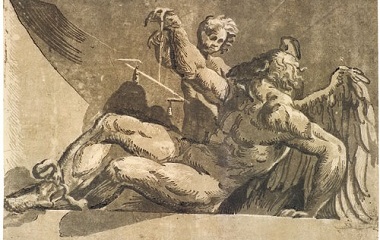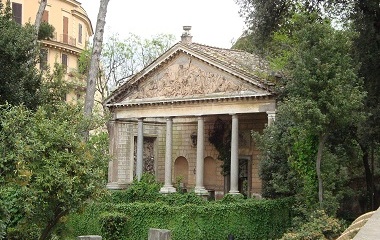Fast Facts:
- Pronunciation: sat-urn
- Origin: Ancient Roman religion
- Role: God of time, wealth and agriculture
- Parents: Father – Caelus. Mother – Tellus
- Wife: Ops
- Symbols: scythe
Who is Saturn?
Saturn was a Roman god of Agriculture who ruled in a Golden Age, a time of peace and prosperity among men. He is viewed as the Roman version of the Greek god, Cronus – god of the universe. Scholars illustrate the similarity between Roman and Greek mythology, with the gods having different names, but the roles and legends connected to them being almost identical. Saturn ruled over a town called Latium, which later became known by its more contemporary name, Rome.
Origin
The Romans adopted many Greek traditions, including their religious and cultural practices, as they held the Greeks in high regard. Greek tutors would even be employed by wealthy Roman families to tutor their sons. The Roman people built the first temple in honor of their god, Saturn around 497 BC.
Legends and Stories
Saturn overthrew his father, Caelus, due to his oppressive rule. Much like the legend of Cronus and Rhea, in Greek mythology, Saturn’s rule was threatened by his own offspring. The solution for him was to eat his offspring, like his Greek counterpart had and was also tricked by his wife into consuming a stone wrapped in cloth, in lieu of his sixth child. The stone caused his digestive system to heave up the other five children he had already digested. His sixth child, Jupiter, triumphed over him that day and again when he overthrew his father when he was older. After this failure, Saturn ran away and settled in Latium where he was welcomed by the two-faced god, Janus. There he taught the people about growing grapes and farming.
Family
Saturn’s consort or wife was the goddess of fertility, Ops. Before Ops, he however had another consort, Lua; the goddess of destruction. His children included: Pluto, Neptune, Juno, Vesta, Jupiter and Ceres.
Appearance
Saturn is oftentimes depicted with a scythe. The god was also featured on Roman coins in 104 BC, riding a chariot pulled by four horses.
Temples and Festivals
The famous temple dedicated to Saturn, the Templum Saturni, has remains which can still be viewed by tourists today. Though the ruins are not the original building, eight illustrious columns rise up from the remnants of the temple’s porch. The temple was built in the center of the commerce district in Rome, known as the Forum Romanum and also housed the Royal Treasury. The current ruins are from the third incarnation of the temple. The first two were destroyed in fires. The original temple was said to contain a statue of the god, constructed of wood. The legs of the statue were wrapped in linen or wool throughout the year, but the bindings were removed for the festival in honor of the god. Sacrifices were made to Saturn with no veil worn on the head, in contradiction with the usual tradition of followers being veiled when making sacrifices. This may have been a reflection of the role reversal the god represented.
His rambunctious festival called Saturnalia lasted originally for only one day, but eventually became a seven-day long celebration, commencing on the 17th December. The festival celebrated the god, the sowing of grain as well as the period of the Golden Age, during which he had ruled. The same feeling of harmony was emulated through the dissolution of the roles of master and slave for the festival’s duration. In some instances, the masters even served their slaves! Both slaves and masters wore the hat worn by those free from bondage, the pileus, during the festival. The hat was a symbol of their goddess of liberty, Libertas, though it was also originally a Greek concept. The festival was marked by the wearing of colored cloth instead of the traditional white togas, which represented the wearer’s status in society. Gambling was allowed during the festivities and a fake king, called the King of Misrule, was chosen from among the commoners. This king ruled during the festival by making frivolous demands of his people and causing general mischief. The festival also included the sharing of gifts among all classes of society as well as much eating and drinking. At one stage the celebration was reduced to a mere three days, by Augustus Caesar, but increased again to a five-day affair thanks to Emperor Caligula – known for his unusual and oftentimes extreme behavior.
Modern Influence
The festival of Saturnalia may well have influenced the Christian celebration of Christmas, scholars purport. The god’s name was also adopted as a day of the week, Saturday, known by its Latin name Dies Saturni. His name has additionally been allocated to the sixth planet from the sun, Saturn. When Galileo Galilei first discovered the planet, he viewed its majestic rings as arms or handles through his telescope. Some of the ice and rock particles in its rings are as large as a house, scientists have subsequently discovered!
Saturn






No comments:
Post a Comment